When Blaine Davis returned to Utah County after serving a two-year church mission in the Provo area, he had no idea what would come next.
“I didn’t really know where I wanted to go,” Davis said. “Whatever job’s going to provide for my family. That was like the one stipulation I had.”
After completing a diesel mechanics degree at Utah Valley University, Davis worked a handful of blue-collar jobs and then started Optimize Auto, a mobile mechanics service operating in Utah and Salt Lake counties. Now he manages the company from a rented two-bedroom apartment in Lehi, taking care of his toddler while his wife attends massage school.
Working hard to make ends meet amid soaring costs for housing, food and education, the always-smiling Davis is the optimistic face of a new generation of working-class families who are putting the American dream to the test.
“We’re just rockin’ and rollin’ man, living the dream,” Davis said, before adding with a chuckle, “I guess.”
Data from a new poll conducted by HarrisX for the Deseret News reveals a conflicted working class, where many have experienced upward economic mobility during their own lives, but amid rising costs and financial instability still find themselves skeptical of the American dream.
These results get right to the heart of a longstanding debate between experts as to whether the American dream is alive and well, dead or dying — or whether it ever existed at all. But one takeaway remains indisputable: the ideal of the American dream, of a comfortable life obtainable through hard work and resourcefulness, remains central to working class identity and ambition.
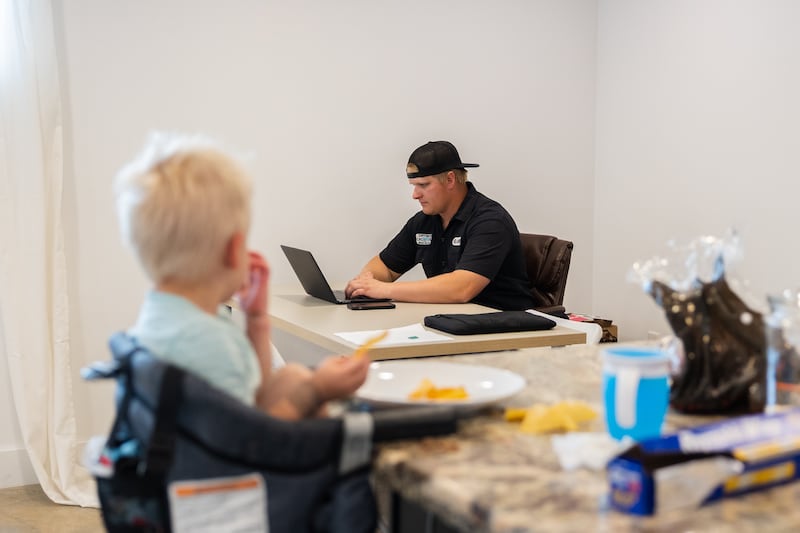
The dream
Though the phrase “the American dream” has come to mean different things since it was first popularized nearly 100 years ago, it is now most often associated with upward economic mobility, says Scott Winship, director of the Center on Opportunity and Social Mobility at the American Enterprise Institute.
“It’s the promise that with hard work you can do better than your parents did before you. And it’s the promise that where you end up won’t be dictated by where you started out,” Winship said in an interview with the Deseret News.
Raised on his grandparents’ cattle farm in a small town on Florida’s panhandle, Davis grew up with mixed ideas of what the American dream had to offer. His father was a roofer and his mother a homemaker, occasionally working as a substitute teacher at her children’s school.
“My dad had a tough go with business,” Davis said. After several rocky attempts at starting his own roofing business, Davis said his dad resorted to working for other companies as a roofing contractor. Davis’ uncles also braved the “solo-preneur” route, he said. And though he admired them for it during his youth, particularly because it allowed them to prioritize their families and choose their own schedule, Davis said that looking back he realizes that they were just “getting by.”
Davis hopes he can find more success and stability as a blue-collar entrepreneur than his relatives. And it’s this hope that shines through as he describes his business venture.
“I feel like as an entrepreneur you’re given this beautiful opportunity,” he said. “I feel like the American dream has never been more alive and that the opportunities are endless.”
However, according to the Deseret News/HarrisX poll, this is a view shared by a minority of working class individuals.
Only 13% of working class individuals believe that the American dream is “very accessible,” according to the survey, with 31% saying the American dream is “somewhat accessible,” for a total of 44%.

The survey was conducted between April 18-24 among 2,178 adults who were asked to self-identify their current socioeconomic class and the one they grew up in. There were 336 respondents who identified themselves as members of the working class. Results from the working class demographic have a sampling margin of error of +/- 5.3%.
In addition to a majority of working-class individuals feeling that the American dream is out of reach, 63% of working-class respondents said that economic development in the United States was leaving groups like them behind as opposed to benefiting everyone equally.
However, this skepticism toward the American dream exists alongside strong reported economic mobility. Over 60% of those who report growing up as lower class or working poor say that they have moved up and out of that socioeconomic class. A near majority of those who grew up working class and lower-middle class report the same, with 42% of those who grew up working class saying that they are now lower-middle or middle class.
This apparent tension between what is possible in the United States and skepticism toward what the country has to offer has to do with a perception that the American dream is now limited to fewer people and occupations, said Mike Fahl, a Salt Lake City native who has made a living selling artwork for 20 years and who considers himself working class or somewhere between lower and working class.
“You want to work 40 years of your life, and raise a family, and then retire with your 401(k); that was considered kind of like an expression of the American dream back in the day,” he said. “Is it viable now? I’ll say less so. But is it possible? Yes.”
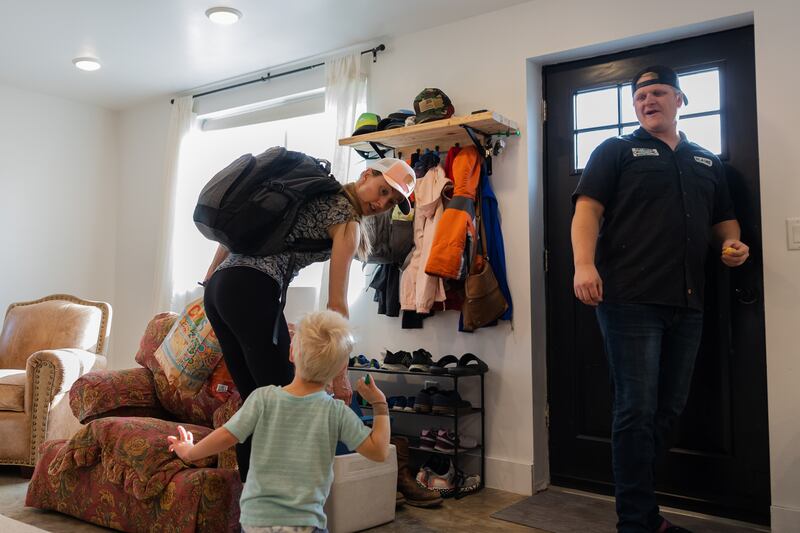
The working class
Like the “American dream,” the definition of the “working class” is open to interpretation.
Barbara Risman, a distinguished professor in the department of sociology at the University of Illinois Chicago, said in an interview with the Deseret News that “working class” refers to “a combination of no college degree and living at a less than middle-class, very tight economic, family life.”
Bill Tibbitts, the executive director of Crossroads Urban Center, a Salt Lake City-based nonprofit that assists low income Utahns, said that what constitutes “working class” has more to do with an individual’s sense that they are on the verge of financial crisis, which is more likely when individuals are unable to develop the assets that come along with home ownership.
Average monthly rent in Salt Lake county increased by $500 between 2018 and 2020, Tibbitts said, making it much harder for a family to save for a down payment on a house.
Housing is not the only sector that has seen a dramatic increase in costs in recent years. Over the last decade, insurance premiums for family health care plans have gone up by around 40%, according to a Kaiser Family Foundation report. During that same time, college tuition has risen by 18%. And more recently, inflation, which includes the costs of food and fuel, hit a four-decade high of 9.1%.
These figures might explain why 72% of the working class say they feel like their financial situation is continuing to worsen, according to the new Deseret News poll, with only 40% of working class respondents saying that they feel very or somewhat financially secure.
But Davis says rising costs are not his top concern. When asked what keeps him up at night, the response came quickly: “Taxes,” he said. “It’s not health care, or anything else, it’s just taxes.”
As a small business owner, Davis said nothing causes him more frustration than the fact that he and his employees spend a significant percentage of each day working for the government, only to come up just short on the bottom line.
However, Davis does his best to not let anything, even taxes, dampen his faith in the rewards that come as a consequence of grit and perseverance. “I think it’s definitely available to anyone who believes it’s available for them.”
But how does the American dream compare to the reality on the ground and in other countries?
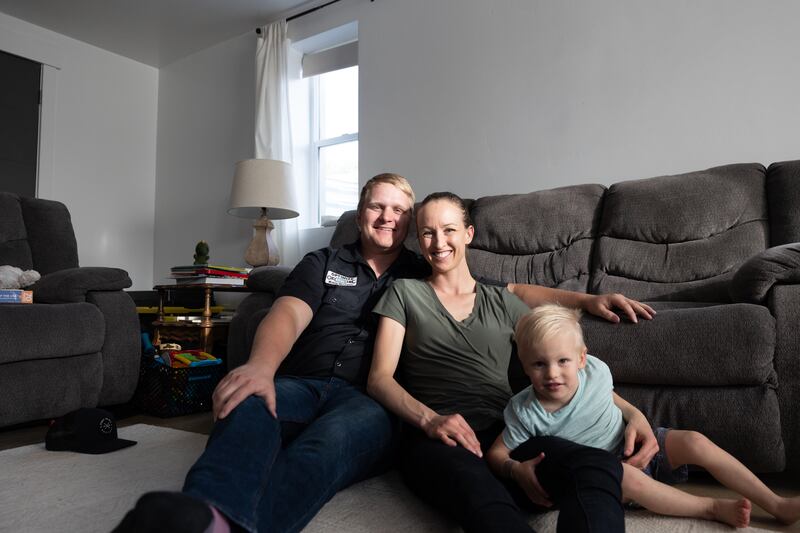
Economic mobility
Not so well, it turns out, according to numerous studies.
“We have this myth of mobility, but our actual mobility statistics are not so positive,” Risman said.
One measure often used by economists when talking about the American dream is relative economic mobility, which measures individuals’ movements between income strata in a country.
Using this measure, it appears — despite what many Americans believe — that several countries in Northern Europe, and Canada, enjoy greater opportunity to move between income quintiles than the U.S., meaning that poverty is stickier, and a rags-to-riches story less likely, in the U.S. than in some of its fellow advanced democracies.
Risman places some of the blame on a lack of public investment in higher education and affordable housing and recommends a return to 1950s-style programs, like those that facilitated home ownership for World War II veterans.
Shawn Fremstad, the director of law and political economy at the Center for Economic and Policy Research, agreed that “universal programs that provide increased economic security” must be part of the solution and cited America’s high levels of income inequality as a key obstacle preventing working-class individuals from getting a leg up and enjoying the American dream.
“We haven’t created institutions where everybody kind of feels like they’re in it together across classes. And so I think that kind of has the effect of maybe amplifying these income-based differences in ways that are not helpful and make people less confident about the future,” Fremstad said in a phone call with the Deseret News.
However, conclusions based on measurements of relative economic mobility may be missing the mark, according to Donald Boudreaux, a professor of economics at George Mason University.
“This notion that the American dream is dead is just wrong,” he said.
America’s comparatively poor levels of relative economic mobility are likely a reflection of how much larger, and widely varying, incomes in the country are compared to European economies, according to Boudreaux. This would make transitions between income quintiles less frequent, resulting in an apparent decrease in relative economic mobility.
“There’s a bias against America in those data precisely because we’re so rich,” Boudreaux said. Indeed, when judged by median income, the U.S. is at the front of the pack. Boudreaux says a focus on improved living standards from generation to generation, or absolute economic mobility, is much more important to understanding the American dream.
“If absolute living standards of most people are increasing, I think that’s the main thing we should celebrate,” he said.
In other words, regardless of how one compares statistics from country to country, America is still a place where hard work can lead to better circumstances than those enjoyed by the previous generation.
Daniel Miñoza came to the U.S. just over two years ago from Hidalgo, Mexico, and has never ceased to be amazed by one simple fact: there is almost always work if you want it.
“I’ve been here two years and I’ve never had a single day without work,” said Miñoza, who works for a landscaping company in Riverton. “The man that works here can make a future for himself.”
Faith in the American dream
Land of opportunity though it may be, there are several areas that need to be improved before working-class Americans regain their faith in the American dream.
When asked what would help them feel more financially secure, 43% of working-class respondents said “more savings,” according to the new Deseret News poll, 41% said “higher salary/wages” and 31% said “affordable and safe housing.”
Soon-to-be-married Catherine Wilbourne works two jobs at the University of Utah hospital main campus, as a department administrative assistant and an operating room assistant. Working overtime to support herself and her partner, Wilbourne has a unique sense of the strains that family can put on working-class individuals as well as the policy approaches that might help.
“I feel like a lot of people are two paychecks away from needing help,” Wilbourne said. “There’s things as simple as giving people more time off when they have a child to recover from that and to help your child in early developmental stages.”
However, income-redistribution programs may just paper over underlying problems while artificially raising prices, Boudreaux said. His approach to helping the working class believe in, and achieve, the American dream begins with removing restrictive zoning regulations to increase housing supply and decreasing government subsidization in higher education to disincentivize academic bloat.
Winship agrees with this general approach, but says it’s unlikely that any deregulation will boost confidence in the American dream until inflation is under control. Beyond that, Winship would like to see accreditation reform, which would increase opportunities for those without college degrees, and policies that promote marriage.
But for Davis, it’s always been a question of mindset, not circumstances. He reasons that if he surrounds himself with people who are also striving for the American dream, including a wife who supports his ideas as well as pursuing her own goals, then it’ll be only a matter of time before his entrepreneurial efforts begin to bear fruit.
“I feel like I’ve tried to just put myself in an environment with successful entrepreneurs,” he said. “I see that they’ve chosen a path that really has improved the quality of their family’s life. … So, I think just being around them has given me that optimism.”
In the end, Davis defines his efforts and his identity in the same way the working class is defined, in relation to the American dream and the pursuit thereof.
“We fight to live the life we want, whether it’s running our own business, being an entrepreneur, or not, trying to find that American dream,” he said.
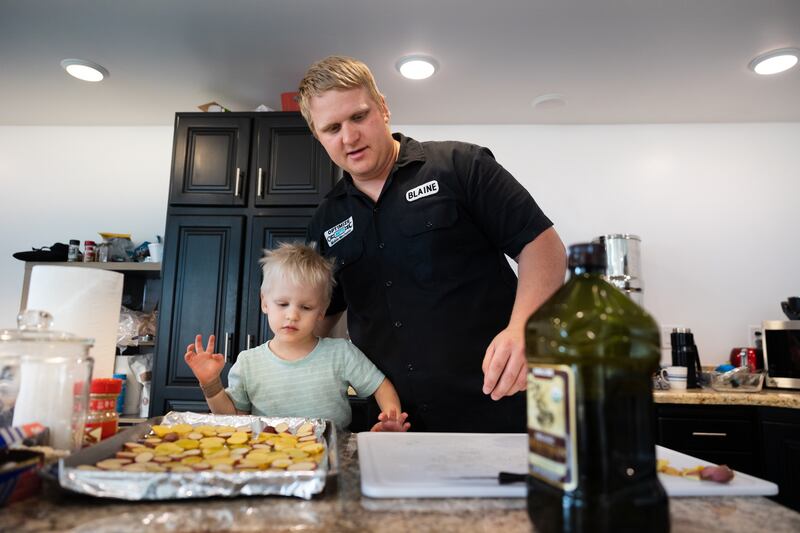

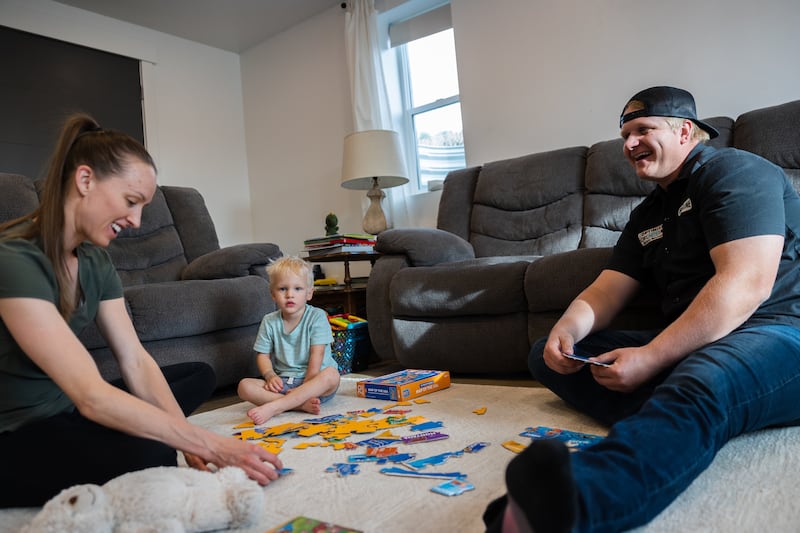
 alt=Brigham Tomco
alt=Brigham Tomco